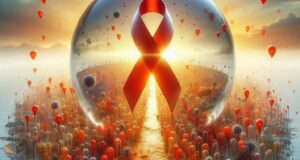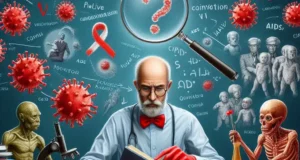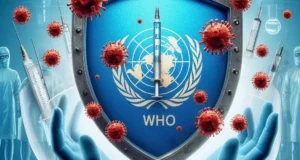Imagine a drop of ink falling into a clear glass of water. At first, it remains a spot. But soon, it spreads—touching every corner, coloring everything. That’s what a pandemic does to the world. Unlike a local fire, a pandemic is a global blaze, burning through countries, continents, and communities without asking permission or showing mercy.

A pandemic is not just an epidemic grown large—it is a global outbreak, affecting people across nations and disrupting life on an international scale. One of the most defining pandemics of the 20th century was AIDS. And today, one question continues to resurface with urgency and importance: AIDS—where did it come from?
To understand a pandemic, let’s begin with its nature. Diseases typically begin in small areas—villages, towns, or cities. These are localized epidemics. But when a disease proves highly infectious, spreads quickly, and moves with people across travel routes, it evolves into a pandemic—a crisis that knows no borders.
HIV, the virus that causes AIDS, followed exactly this path.At the time, the virus lived in isolation, passing quietly between individuals. But as travel, urbanization, and global contact increased in the 20th century, that once-contained virus began its journey around the world.
By the early 1980s, doctors in the United States began reporting unusual cases of pneumonia, cancers, and immune system failure—especially among young, otherwise healthy individuals. They didn’t know it yet, but they were witnessing the early days of what would become the AIDS pandemic.

So again we ask: AIDS—where did it come from?
The virus didn’t arrive in one sudden explosion. It moved with people, relationships, and lack of awareness. By the time the world realized what it was facing, HIV had reached every corner of the globe.
A pandemic, like AIDS, is not just a health issue—it becomes a social, economic, and cultural crisis. Schools, hospitals, governments, and families all feel its weight. With AIDS, the damage wasn’t limited to the body; it infected conversations, policies, and public perception. It brought fear, stigma, and discrimination—especially against the marginalized.
What made the AIDS pandemic even more complicated was that HIV is not easily transmitted like the flu. It spreads through blood, sexual contact, and from mother to child during birth or breastfeeding. But because people didn’t understand it early on, misinformation spread even faster than the virus itself.
Despite its slow transmission method, the long incubation period and the lack of early symptoms made HIV extremely dangerous. People could carry and spread the virus for years without knowing it. That’s what allowed AIDS to grow from a localized health concern into a global pandemic.
But there is another side to this story—a story of resilience and progress. Once scientists identified HIV, treatments began to develop. Awareness campaigns, safe practices, and antiretroviral therapy (ART) have saved millions of lives. While AIDS remains a global health issue, it is no longer the death sentence it once was.
Still, the question remains relevant today: AIDS—where did it come from? It came from the depths of forests and silence, from missed warning signs and human connection. But it also brought with it a lesson that echoes louder than ever: In a pandemic, what affects one part of the world can soon affect all.




